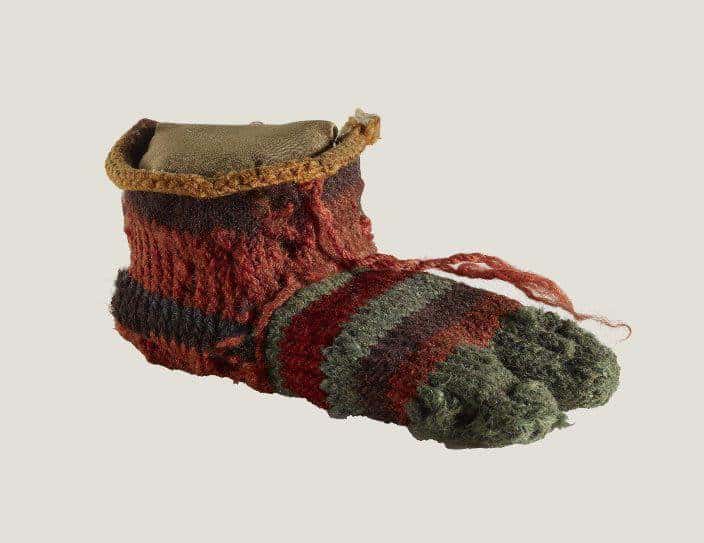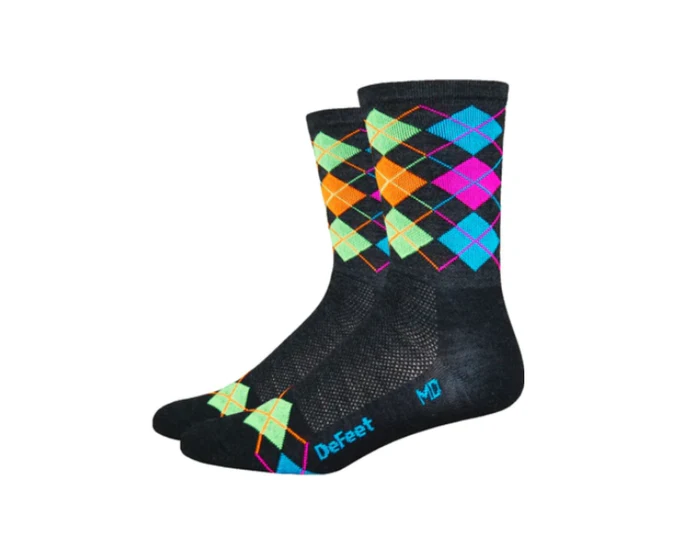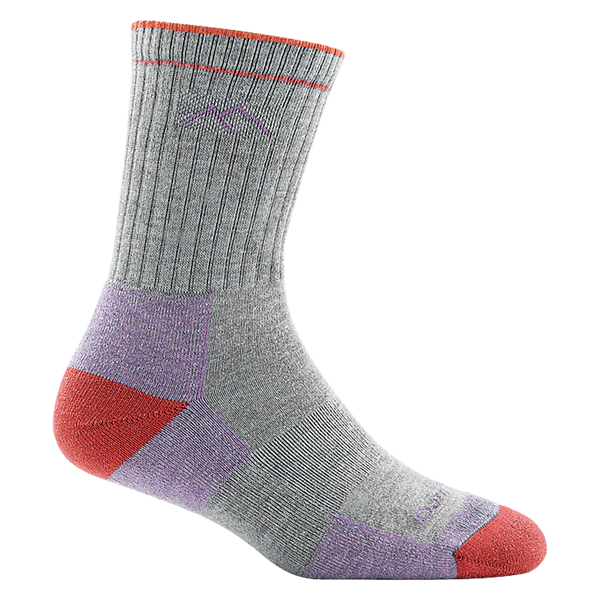Podiatrist Sock Recommendations
A Guide to Socks
By Howard E. Friedman DPM (adapted from TrailWalker, published 2010. Updated 2024).
Ancient men and women wore shoes, or, at least sandals. And, people have even been wearing socks for a long time too! In fact, a sock about 1,700 years old was found in Egypt, dyed with plant material in a stripe pattern and with the big toe separated from the small toes, now in the British Museum. And wearing socks is very beneficial.
The primary role of socks is to help absorb and dissipate perspiration of the feet and provide a ‘second skin’ for the feet that can be changed and modified as conditions warrant.

Some High-Performance Sock Brands

Then and Now
Before the wide availability of textiles, socks are thought to have been formed from animal skins. As textiles became common, socks were woven from cotton, wool, or even silk. In modern times, cotton has been the prevailing fabric for every-day as well as athletic use. In the mid-twentieth century, synthetic materials such as nylon and Rayon became popular as stocking material.
Currently, however, wool and select synthetic materials have become the fabrics of choice for many including athletes engaged in endurance activities, such as long distance cycling, hiking and running. But, how those fibers are used in the design and the quality of the manufacturing of the sock are just as important as the actual ingredients.
What the Research Shows
Research into sock material has been investigated by the military in an effort to help reduce foot blister formation in army recruits, and some research has been performed by podiatrists as well as the textile industry. Compared to cotton, many high-performance synthetic materials are more effective in reducing the incidence of blister formation, and are also effective in helping control odors.
However, much of the sock textile research has focused on wool, a protein produced by sheep skin cells. Research has verified that wool, even when wet, can still insulate and maintain warmth. Wool can absorb more moisture than cotton. Moreover, wool was shown, in one study, to retain fewer fungal elements than either cotton or nylon stockings. Laboratory research performed by the Wool Research Organization of New Zealand demonstrates wool’s superior wicking abilities when compared to synthetic fabrics and that wool can even absorb moisture when it is in a vapor state, meaning it can begin wicking moisture even before droplets form on the skin.
Moisture Management
“The main battle is moisture management”, explains Mr. Paul Willerton, vice-president for marketing of DeFeet International, a manufacturer of high-performance socks. In a telephone interview Mr. Willerton went on to explain that the prudent use of wool as well as synthetic materials are important in creating a sock that is both durable and effective at helping to maintain the feet in a dry environment. Indeed, similar to military recruits, hikers and backpackers are covering many miles in a single day, weighted down with the contents of their backpack plus food and water. Keeping the feet dry is critical to help avoid common foot problems such as blistering and chronic skin fungal infections.
Companies such as Defeet blend various amounts of wool and synthetic material, using proprietary designs and computerized sophisticated weaving equipment to produce multiple thicknesses and weights of socks, tailored for specific activities. So, according to Mr. Willerton, DeFeet sponsored ultra-long distance runner and backpacker, AndrewSkurka, prefers a thin sock with a high wool content, designed with a breathable mesh panel over the top of the foot. This same design, however, is also used by DeFeet to manufacture a synthetic sock of primarily nylon. By creating a tightly woven sock with a proprietary design, DeFeet has created a synthetic sock with wicking capabilities, Mr. Willerton said.
What to Wear?
Shopping for high performance socks in an outfitter shop or on-line can be overwhelming. First, expect to pay more than usual per pair of socks. Consider the weight of the sock. Finding the right sock for your activity and your shoe style may require trial and error.
A thinner sock will still be more appropriate for warmer weather and a thicker sock would be a good choice for cold weather. A mid-weight sock may be used year-round. High-performance socks are generally marketed as either ‘lightweight’, mid-weight’, or ‘heavyweight’ thicknesses. In addition, some socks will have extra padding in the heel or forefoot and may have mesh paneling in the top portion of the sock for ventilation.
Check the sock ‘ingredients’. Look for socks with at least 30% wool content if you want the benefits of wool. Some wool socks can have as much as 70% or more wool content.

Synthetic materials can also be useful. Many of them are quite durable and may extend the life of your expensive socks. Common synthetic materials include nylon, polypropylene and Coolmax, a patented fiber. While some socks may be primarily one fabric or another, it is common to find a blend. The blending of fabrics is helpful to maximize the benefits of each, like the moisture wicking of wool and durability of nylon.
And now bamboo is the latest material to be blended into socks with claims of odor, anti bacterial and moisture claims. Some companies also claim that bamboo is a more sustainable ingredient for socks. However, many of these claims are not widely supported in research at this time. But, people do like their bamboo socks.
Be cognizant of what type of shoe or boot you will be wearing. If your shoe fits close to the foot, a thin or lightweight sock will be preferable. A heavyweight sock will likely be too snug. In addition, a good fit is important to avoid bunching of the sock material, which can lead to skin irritation. In addition, high-performance socks often eliminate prominent seams throughout the sock, making it more comfortable to wear and further reducing the chance of skin irritation.
Even high-performance socks however, need time to ‘air-out’ and dry. Therefore, during an active day, remove your shoes, and if time allows, even your socks, if you begin to feel that they are becoming damp. On long trips, change socks daily, giving the just worn pair adequate time to completely dry.
A Brief guide to fabrics used in socks.
Wool: a protein from sheep skin cells, woven into fabric. Wool is naturally crimped which creates air pockets which help maintain heat. Most wool comes from the Merino sheep. Fibers can be fine or coarse with clothing fibers usually of medium thickness.
Polyester: a synthetic fabric made from combining alcohol with an acid, to create a durable, comfortable feeling fabric that can by dyed.
Nylon: a synthetic fabric made from a polyamide chemical group, to create a durable, comfortable material, originally used to replace silk.
Polypropylene: a synthetic fibers that can wick moisture but retains odors.
Rayon: a synthetic material made from cellulose. It is absorbent, but can shrink.
Bamboo: a textile that includes some percentage of processed bamboo fibers.
